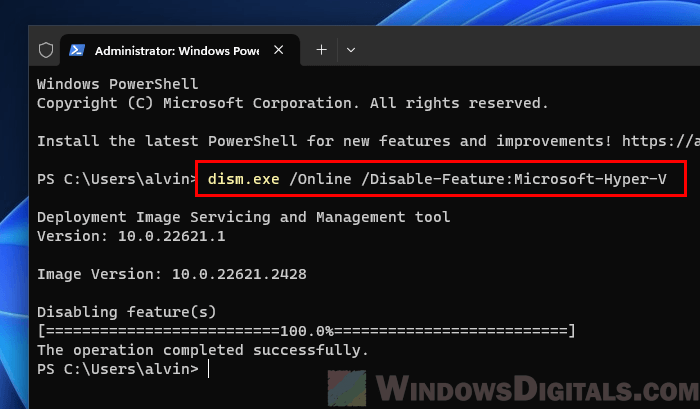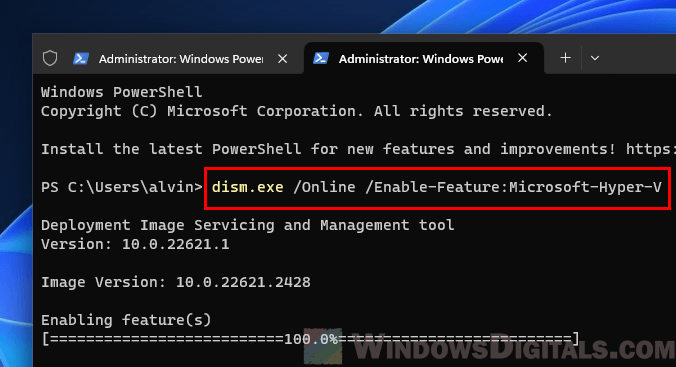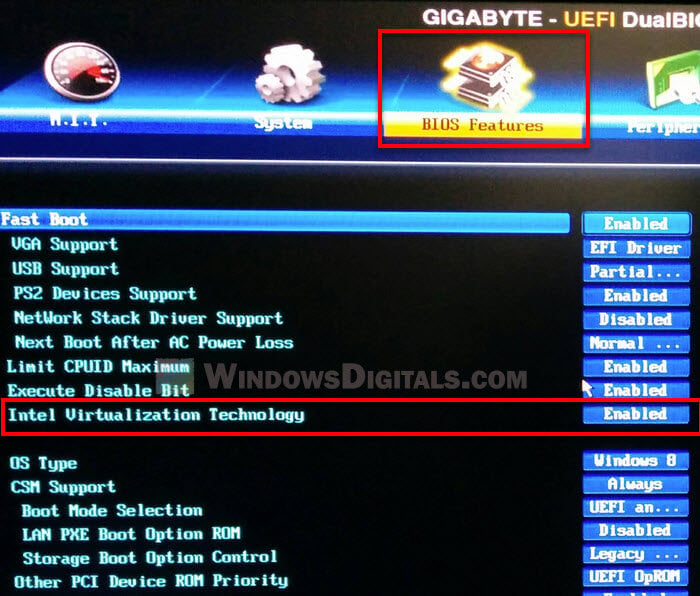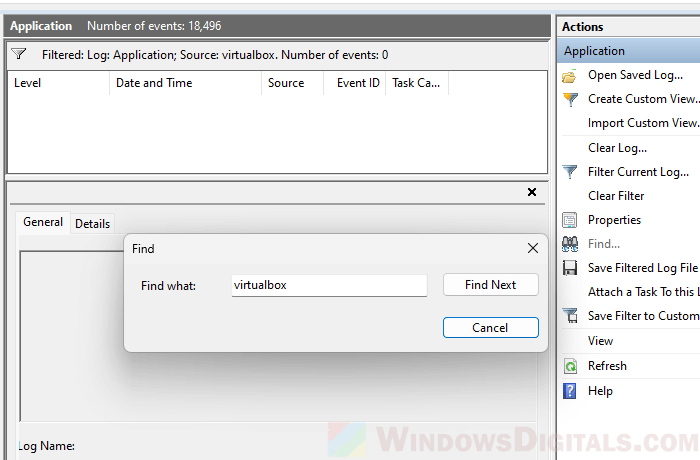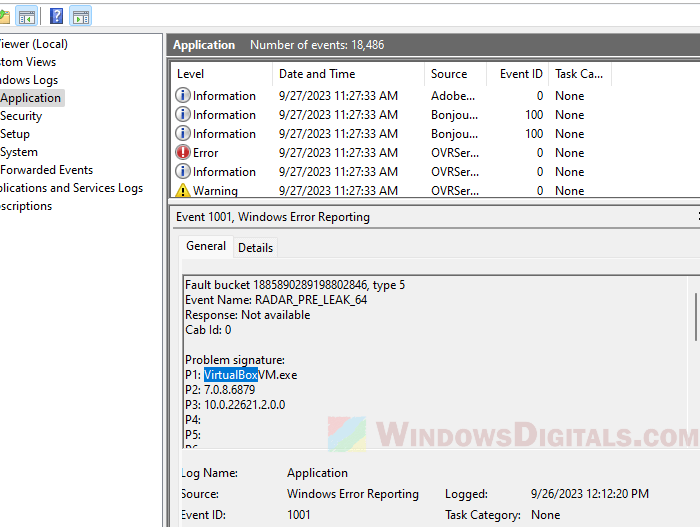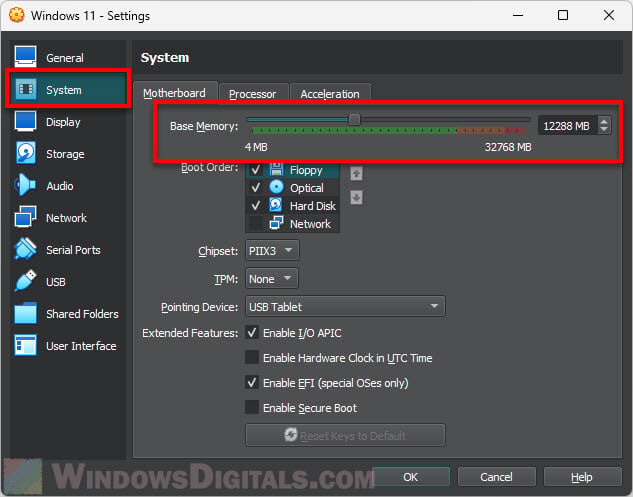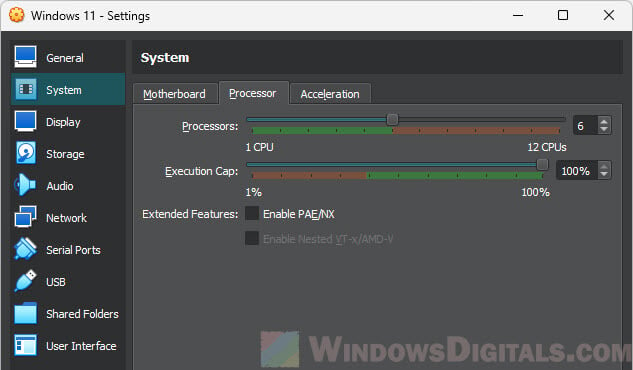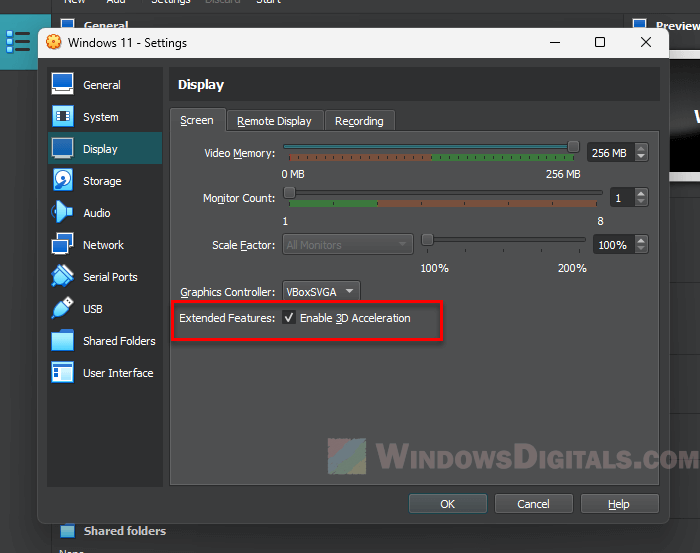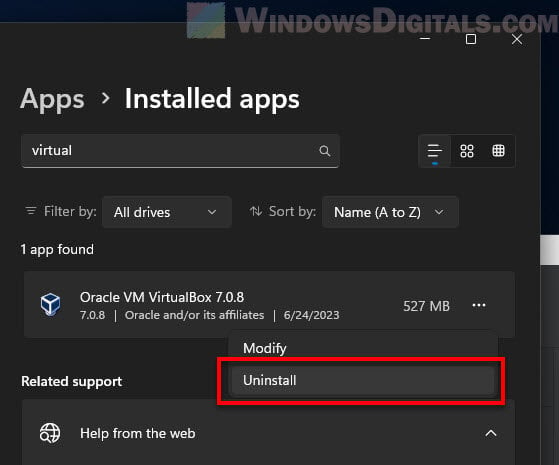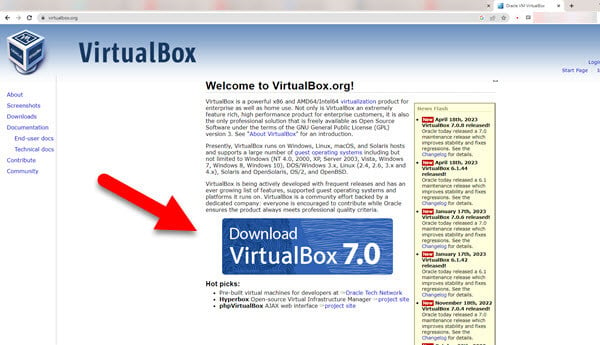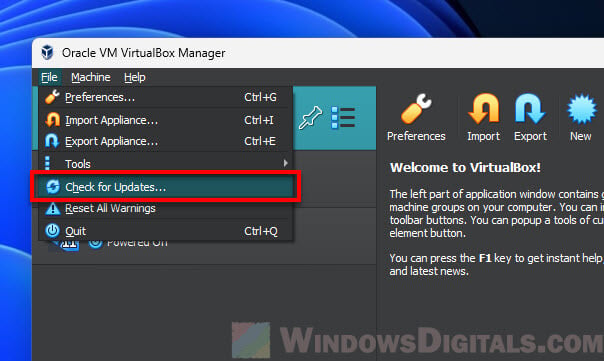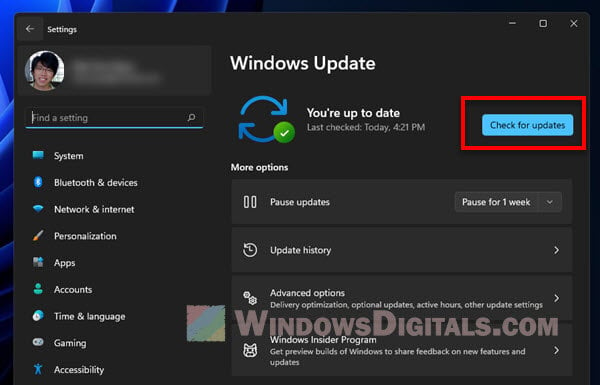VirtualBox is a go-to option for many when they need to “virtually” run different operating systems on their computers. But, since Windows 11 came out, some users are having problem using it as a host or as a VM. We’re going to talk about the issues you might see while using VirtualBox on Windows 11, including an already known compatibility issue, and we’ll show you how to sort things out.
Also see: VirtualBox Windows 11 or 10 Stuck on Boot Logo
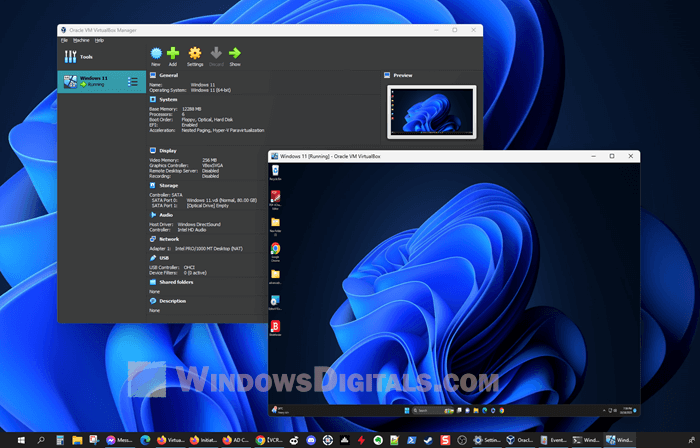
An already known issues with VirtualBox and Windows 11
Right after Windows 11 came out, people noticed a big issue when they tried to use VirtualBox and Hyper-V together. It just didn’t work. The two didn’t get along, and VirtualBox VMs wouldn’t start. This was mainly because both VirtualBox and Windows 11 had trouble when Hyper-V or Windows Hypervisor was installed.
In March 2022, Microsoft and Oracle fixed this problem. Microsoft confirmed that the issues with Oracle VirtualBox and Windows 11 were sorted out starting with VirtualBox 6.1.28 and the versions that followed.
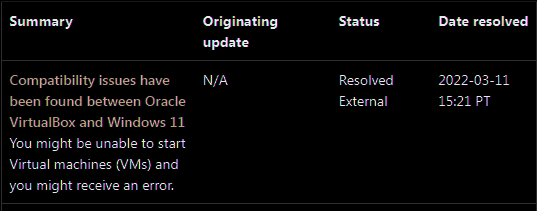
Even though this big problem was fixed, some people might still run into other smaller issues from time to time. Knowing how to troubleshoot these can really help.
Linked issue: VirtualBox Windows 11 “This PC doesn’t meet the requirements”
Enable or disable Hyper-V
Hyper-V is a built-in feature in Windows that lets you run several operating systems on one computer. It’s a good default virtualization software, but sometimes it can cause problems with other software like VirtualBox.
How to check if you’ve enabled Hyper-V
You can check if Hyper-V is enabled on your Windows 11 by running this command in Windows PowerShell (note: this doesn’t work in CMD):
Get-WindowsOptionalFeature -Online -FeatureName Microsoft-Hyper-V-All
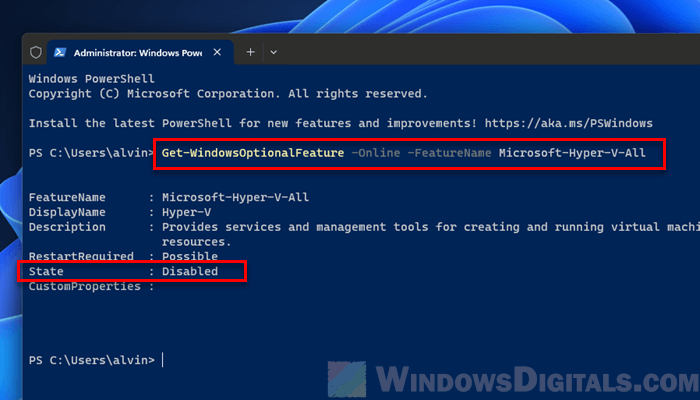
How to disable Hyper-V
- Press the Windows key + X. Choose Windows PowerShell (Admin), Command Prompt (Admin), or Terminal (Admin) from the menu that pops up.
- Type the following command and hit Enter:
dism.exe /Online /Disable-Feature:Microsoft-Hyper-V
This tells your computer to turn off Hyper-V.
- Restart your computer to make the change happen.
How to enable Hyper-V
If you want to turn Hyper-V back on later:
- Just like before, press Windows key + X and pick Windows PowerShell (Admin) or Command Prompt (Admin).
- Type this command:
dism.exe /Online /Enable-Feature:Microsoft-Hyper-V
This turns Hyper-V on again.
- Restart your computer to finish up.
Know that not all Windows versions have Hyper-V. Check if yours does before you try to switch it on or off. If you’re running several virtualization tools at once, they might not work together well. It’s usually better to stick to one main tool if you can.
Relevant problem: Sorry, this application cannot run under a Virtual Machine
Enable or disable hardware virtualization in BIOS/UEFI
Most modern CPUs have a feature that helps a lot with running virtual machines. This feature needs to be turned on in your computer’s BIOS or UEFI settings if it’s not already.
Related concern: This host supports Intel VT-x, but Intel VT-x is disabled
- Turn off your computer, then turn it back on. Immediately start pressing the BIOS/UEFI key, which might be F2, F10, F12, ESC, or Delete, depending on your computer.
- In the BIOS/UEFI menu, find a section like Advanced or CPU Configuration.
- Look for Intel Virtualization Technology, Intel VT-x, or AMD-V. This is the setting you need.
- If you need to turn it on, choose Enabled. If you need it off for troubleshooting or other reasons, choose Disabled.
- Save your changes and exit. Usually, you press F10 or pick Save & Exit.
- Let your computer start up normally. The changes will take effect then.
Check if your CPU can do hardware-assisted virtualization before you look for this option. Also, some computers have extra security settings like Intel VT-d or I/O MMU Virtualization. You don’t usually need to change these unless you have a specific need.
Check event logs and error codes
VirtualBox keeps a log of what it does and any problems it runs into. By looking at these logs, you can often figure out what’s wrong and how to fix it.
What are event logs?
Event logs keep track of what your apps and system are doing, like any alerts, warnings, or errors. Windows puts these logs in the Event Viewer, which organizes them so they’re easier to look at.
How to view VirtualBox logs in Event Viewer
- Press the Windows key + R. Type
eventvwr.mscand press Enter. - In the Event Viewer, go to Windows Logs > Application.
- Use the Find option to search for anything about VirtualBox.
- Look for any error symbols (red exclamation marks) or warnings (yellow triangles). These will give you clues about what might be going wrong.
How to read the error codes
- If you see an error message in VirtualBox, note any error code that comes with it.
- VirtualBox has a lot of help docs. Use the search function to look up your error code.
- If you don’t find what you need there, try searching online. Forums like Reddit often have discussions that could help.
Event Viewer can be overwhelming with all its logs. Use filters to make your search easier. Always make sure your VirtualBox is up to date, as some errors might be fixed in the latest version.
Related resource: How to Show Missing VirtualBox Menu Bar in Windows 11/10
Adjust the VM settings in VirtualBox
Making sure your virtual machine settings are as they are supposed to be is very important to avoid problems. If settings aren’t right, you might have slow performance, crashes, or the VM might not start at all. The following are things you should look at.
Allocate enough RAM and CPU
The amount of RAM and CPU cores you give your VM makes a big difference in how well it runs. Not enough resources can make it slow or stop it from starting.
- Open VirtualBox and pick the VM you want to adjust.
- Click Settings > System.
- In the Motherboard tab, move the slider to set how much RAM you want to give it. Make sure you don’t use more than half of your total system memory to keep your main system running smoothly.
- Go to the Processor tab and decide how many CPU cores to use. Again, it’s best not to use more than half of what you have.
Enable 3D Acceleration
Turning on 3D acceleration can make graphics better in your VM, especially if you’re using apps or systems that need good graphics.
- Go to Settings > Display.
- Under the Screen tab, tick the box for Enable 3D Acceleration.
Adjust video memory
Adding more video memory can improve graphics performance, especially for high-demand apps.
In the Display settings, set the video memory amount using the slider. Putting it at the max usually works best.
Other general recommendations
- Make sure the VM’s virtual hard drive has enough space. If it runs out, you might see some odd behavior.
- Depending on what you need, you might want to turn on or off certain features like shared folders or drag-and-drop between your main system and the VM.
- Check that the network adapter settings are right for your network. If they’re not, you could have connection problems.
- Change settings one by one and test the VM each time to see how it affects things.
- If some settings are grayed out, it’s because the VM is running. Make sure to shut down the VM before making changes.
Try to reinstall VirtualBox
Sometimes starting over is the best way to fix software problems. If your VirtualBox installation is messed up or clashing with other software, try reinstalling it.
Uninstall VirtualBox
- Before you uninstall, make sure you back up your VMs. You can do this by copying the VM folder (usually in the default VirtualBox VMs directory) to another location.
- On Windows 11, go to Start menu > Settings > Apps.
- Find Oracle VM VirtualBox in the list and click on it.
- Click Uninstall and follow the steps to remove the software.
Reinstall VirtualBox
- Download the latest version of VirtualBox from the official site.
- Run the installer and follow the steps on the screen. Make sure to allow any necessary permissions if asked.
- Once installed, open VirtualBox and bring your VMs back by going to File > Import Appliance.
After reinstalling, you might need to tweak some VM settings again. Always use a version of VirtualBox that works well with Windows 11 to avoid new problems. If you had any extra tools or extensions for VirtualBox, don’t forget to put those back in, too.
Update VirtualBox and Windows 11
Keeping your software up to date is important because updates are usually to fix bugs, which might solve whatever problem you’re facing right now. Below is how you update VirtualBox and Windows 11.
Update VirtualBox
- Open VirtualBox and go to File > Check for Updates. If there’s a new version, you’ll see a prompt to download and install it.
- You can also go to the VirtualBox website to download the latest version yourself.
Update Windows 11
- Click the Start button and go to Settings.
- Go to Windows Update > Check for updates.
- If there are updates, follow the steps to download and install them. It’s a good idea to restart your PC after updating.
Try to back up important data, like your VM, before updating. While it’s rare, updates can sometimes cause VM to be unstable. If an update causes new problems, try to ask for help in VirtualBox official forums or community groups like Reddit.
Try an alternative virtual machine solution
If you keep having trouble with VirtualBox on Windows 11, you might want to look at other virtual machine options. VMware is one of the top alternatives.
Learn more: How to Open VMDK File in Windows 11
VMware Workstation Player
VMware Workstation Player is free for personal use and lets you run multiple operating systems on one Windows or Linux PC. It’s known for being really stable and compatible.
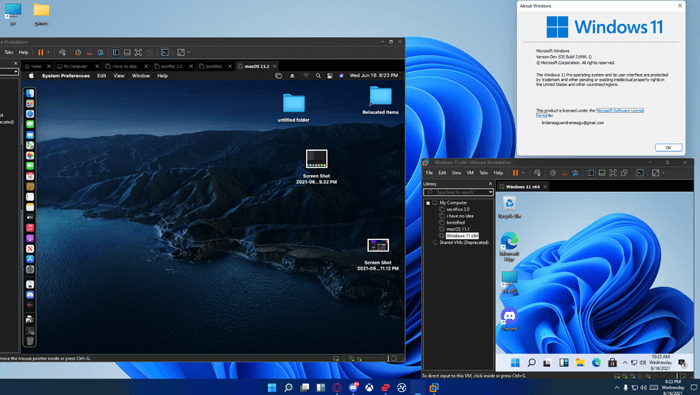
- Download VMware Workstation Player from the official VMware website.
- Install the software by following the steps on the screen.
- Open VMware Workstation Player and pick Create a New Virtual Machine.
- Use the setup wizard to install the operating system you want.
Before moving from VirtualBox to VMware, make sure to back up any VMs you want to keep. VMware uses a different file format (.vmx) than VirtualBox (.vbox), so you might need some tools or converters to move your VMs over. You can also think about other options like Parallels Desktop (for Mac users) and Microsoft’s Hyper-V.
VirtualBox is a widely used virtualization software that allows users to run multiple operating systems on a single machine. However, like any software, VirtualBox installations can sometimes encounter issues, even on the latest Windows 11 operating system. In this guide, we will discuss the ways to fix VirtualBox Installation Failed in Windows.
If you’re facing installation failures while trying to set up VirtualBox on Windows 11, this guide will walk you through potential solutions to get your virtualization environment up and running smoothly.
There are many reasons why VirtualBox installation might fail on Windows 11. Since it requires certain dependencies before you can install VirtualBox, make sure to first install all the required dependencies.
However, even after installing them, if you are still facing the Installation Failed error, you can try out some methods to fix it. So let’s get started.
1. Turn Off Hyper-V
The Windows Hypervisor Platform (Hyper-V) is a feature that can interfere with VirtualBox. By using it, you can create a virtual machine just like in VirtualBox. This can lead to conflicts between the two platforms. To avoid this, attempt to disable Hyper-V and then proceed with the VirtualBox installation on Windows 11.
Here is how you can turn off Hyper-V
1. Click on the Windows icon and type Turn Windows features on or off.

2. Open it from the search result.
3. You’ll get a Windows Features window. Here, uncheck the Hyper-V feature and click OK to save the changes.
4. Finally, restart your PC.

After that, attempt to install VirtualBox on your Windows 11. If it does not work you can try out the below-mentioned methods.
2. Update Windows
Outdated Windows versions can sometimes contribute to this issue. It’s essential to confirm that your Windows 11 operating system is current with the latest updates and patches. Outdated system files can intermittently result in conflicts during software installations.
Here’s how you can update your Windows operating system:
1. Press Windows + I to open the Windows settings.
2. Click on the Windows Update tab on the left pane and then click on the Check for Update button.
3. Now, your system will check for updates. If there are any updates available, you will receive an option to download and install them.

4. Once the update is installed, restart your Windows 11 PC.
3. Ensure Enough Disk Space
To install any software on your device, you need to ensure that you have enough available storage to save the installed software files.
One of the most common reasons for installation failures on computers is insufficient disk space. You can try freeing up disk space to resolve the VirtualBox installation failed issue.
To check your system’s storage, follow the steps below:
1. Open the File Explorer by pressing the Windows + E key combination.
2. Right-click on the C Drive and from the menu that appears, click on the Properties option.
Here, we are checking the disk properties of the C drive, because all the Windows system files and software installation fields are stored on the C drive.

3. Here, under the General tab, you can see the Disk space information.

4. If you have insufficient disk space, consider deleting unnecessary files from the disk. To free up space, you can refer to our guide on how to use Storage Sense in Windows 11.
4. Clear Temp Files
Temp files are temporary files stored on your computer. You should regularly clean these files; otherwise, they may cause your computer to slow down and result in various errors, such as installation errors or failures.
Many users have found that deleting the temp directory resolves installation issues and helps free up disk space.
Here’s how you can clean the temp files from your system:
1. Press the Windows + R keys to open the Run dialog.
2. Here, type the following command and click on the OK button to open the Temp folder.
%temp%

3. In this folder, you will find the temporary files of the system. Press Ctrl + A to select all and click on the Delete button.

4. After that, make sure to also delete them from the Recycle Bin.
5. Run Installer as Administrator
After following all of the above-mentioned methods, you can now attempt to run the VirtualBox Installer file to install VirtualBox on Windows. However, you have to run the installer as an administrator.
To do so, follow these steps:
1. Locate the VirtualBox setup file and right-click on it.
2. Now, click on Run as administrator from the context menu that appears.

3. A User Account Control prompt will appear. Here, click the Yes button.
4. Then, the installation wizard will appear. Follow the on-screen instructions to install VirtualBox on Windows.

We already have a detailed guide on how to install Oracle VM VirtualBox on Windows. You can check out the linked guide.
Conclusion
That’s it! This is how you can VirtualBox Installation Failed in Windows 11. Installing VirtualBox on Windows 11 can sometimes pose challenges due to compatibility issues and conflicts with other virtualization platforms. By following the methods outlined in this guide, you can troubleshoot and resolve installation failures.
Remember to double-check the system requirements, run the installer as an administrator, and ensure that conflicting features like Hyper-V are disabled. With patience and a systematic approach, you’re likely to have VirtualBox up and running smoothly on your Windows 11 system. This will enable you to create and manage virtual machines for various purposes effectively.
-
Rosea
- Posts: 7
- Joined: 12. Oct 2022, 19:04
Unable to install virtualbox on windows 11
Hi All,
I had and old version of virtual box installed on my laptop — 6.1.38 I uninstalled it — since it did not uninstall, I tried using regedit and I tried installing 6.1.40 but it says «Fatal error during installation». So I tried the following:
1. Install as administrator
2. disable antivirus
3. delete the «.VirtualBox» folder
4. cleaning the registry with CCleaner
5. disabled USB support
None of this worked, please help me resolve the issue.
Thank you,
Rose
-
scottgus1
- Site Moderator
- Posts: 20945
- Joined: 30. Dec 2009, 20:14
- Primary OS: MS Windows 10
- VBox Version: VirtualBox+Oracle ExtPack
- Guest OSses: Windows, Linux
Re: Unable to install virtualbox on windows 11
Post
by scottgus1 »
Please try this:
Make a new folder on your C drive to put the installer and the log it will make:
C:\VBinstall
Put the installer in the new folder. Open a Run-As-Admin command prompt, and enter this in the command line:
«C:\VBinstall\VirtualBox-X.Y.Z-######-Win.exe»{space}—logging{space}—msi-log-file{space}»C:\VBinstall\textfile.txt»
So for 6.1.38 it should read:
«C:\VBinstall\VirtualBox-6.1.38-153438-Win.exe» —logging —msi-log-file «C:\VBinstall\msilog.txt»
Zip and post «msilog.txt» using the forum’s Upload Attachment tab.
-
BillG
- Volunteer
- Posts: 5106
- Joined: 19. Sep 2009, 04:44
- Primary OS: MS Windows 10
- VBox Version: VirtualBox+Oracle ExtPack
- Guest OSses: Windows 10,7 and earlier
- Location: Sydney, Australia
Re: Unable to install virtualbox on windows 11
Post
by BillG »
The problem you are having is with the MSI installer, not with VirtualBox (which is why you found a solution at Microsoft). You are more likely to get reliable help in a Microsoft forum than here because of this — that’s their special interest.
Bill
-
fth0
- Volunteer
- Posts: 5690
- Joined: 14. Feb 2019, 03:06
- Primary OS: Mac OS X other
- VBox Version: VirtualBox+Oracle ExtPack
- Guest OSses: Linux, Windows 10, …
- Location: Germany
Re: Unable to install virtualbox on windows 11
Post
by fth0 »
msilog.txt wrote:
InstallNetLwf: VBoxNetCfgWinNetLwfInstall failed, error = 0x80070002 InstallNetFlt: VBoxNetCfgWinNetFltInstall failed, error = 0x80070002
The installation of the VirtualBox network drivers failed. The error code 0x80070002 typically indicates general problems inside the Windows installer mechanisms. Google is your friend.
-
scottgus1
- Site Moderator
- Posts: 20945
- Joined: 30. Dec 2009, 20:14
- Primary OS: MS Windows 10
- VBox Version: VirtualBox+Oracle ExtPack
- Guest OSses: Windows, Linux
Re: Unable to install virtualbox on windows 11
Post
by scottgus1 »
You’ll have to post this final log and fth0’s diagnoses on a Microsoft forum that deals with installing issues.
At this point Virtualbox isn’t running yet, and Windows is having trouble installing the Virtualbox files. Something is wrong with your Windows. A Microsoft forum may be able to explain what to do.
-
Home
-
News
- This PC Can’t Run Windows 11 on VirtualBox? Here Are 3 Fixes!
By Daisy | Follow |
Last Updated
It’s annoying to encounter the “This PC can’t run Windows 11 on VirtualBox” issue. Luckily, this post can help you solve the problem. You can follow this guide from MiniTool to get rid of the issue. Now, keep on your reading.
This PC can’t run Windows 11 on VirtualBox
When you try to install Windows 11 on your VirtualBox, you may receive the “This pc can’t run Windows 11 on VirtualBox” error message. This issue can also occur on Windows 10/11 hosts and Vmware Workstation.
Then, let’s see how to get rid of the “This PC can’t run Windows 11 on VirtualBox” issue.
How to Fix This PC can’t run Windows 11 on VirtualBox
Fix 1: Change the Windows Version You Choose
Virtualbox allows you to choose which version of Windows to install and set the virtual machine’s resources accordingly. You can change the Windows 11 version to Windows 10 or others. This method is proved useful to fix the “Windows 11 not installing on Virtualbox” issue.
Step 1: Open the VirtualBox and click the Settings icon and go to the General tab.
Step 2: Scroll down the menu next to the Version line and change the Windows version.
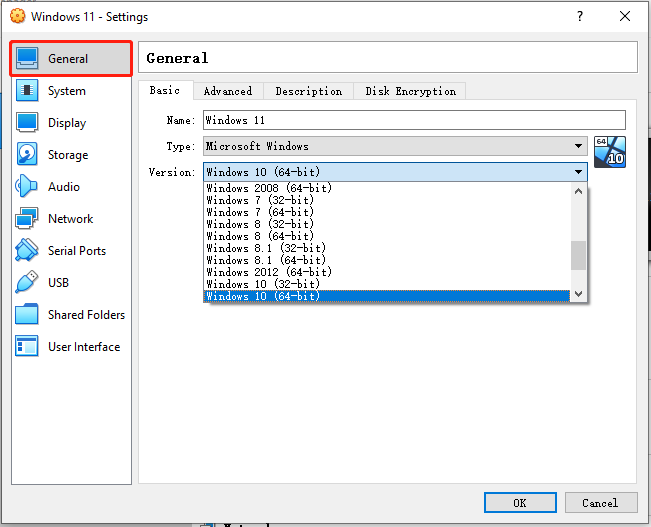
Related articles: Fixed: This PC Can’t Run Windows 11 on Vmware Workstation
Fix 2: Select VBoxSVGA as Your Video Adapter
If you are unable to install Windows 11 on VirtualBox, you can also try to select VBoxSVGA as your video adapter.
Step 1: Open the VirtualBox and click the Settings icon and go to the Display tab.
Step 2: Scroll down the menu next to the Acceleration line and choose VBoxSVGA.
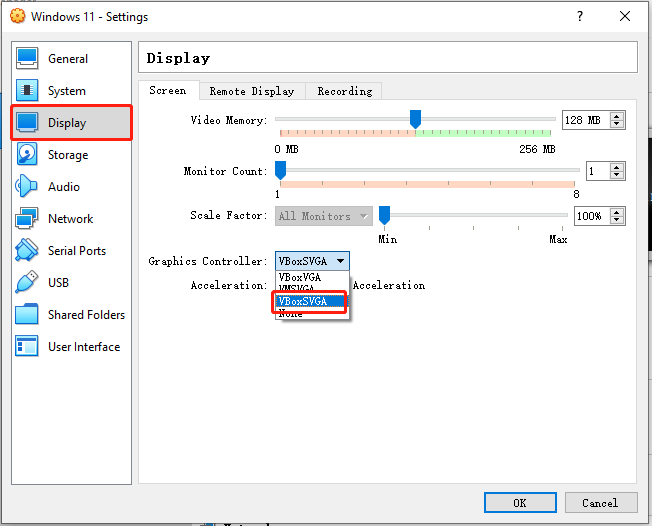
Fix 3: Bypass the Check
If the previous methods are not working, you should try to bypass the check. Follow the guide below:
Step 1: After you receive the “This PC can’t run Windows 11” on VirtualBox, you need to restart the VirtualBox.
Step 2: Then, press the Shift + F10 keys together to open the command line window on the first page of windows 11 installation.
Step 3: Type regedit and press the Enter key to open Registry Editor.
Ste 4: Then, go to this path – Computer\HKEY_LOCAL_MACHINE\SYSTEM\Setup.
Step 5: Right-click the Setup key, then, choose New and click Key. Name it as LabConfig. Step 6: Click LabConfig and right-click the empty space to select the DWORD (32-bit) Value option. Name it as BypassTPMCheck. Double-click it to change the value data to 1, and press OK.
Step 7: Right-click the empty space to select the DWORD (32-bit) Value option. Name it as BypassCPUCheck. Double-click it to change the value data to 1, and press OK.
Step 8: Right-click the empty space to select the DWORD (32-bit) Value option. Name it as BypassRAMCheck. Double-click it to change the value data to 1, and press OK.
Step 9: Right-click the empty space to select the DWORD (32-bit) Value option. Name it as BypassSecureBootCheck. Double-click it to change the value data to 1, and press OK.
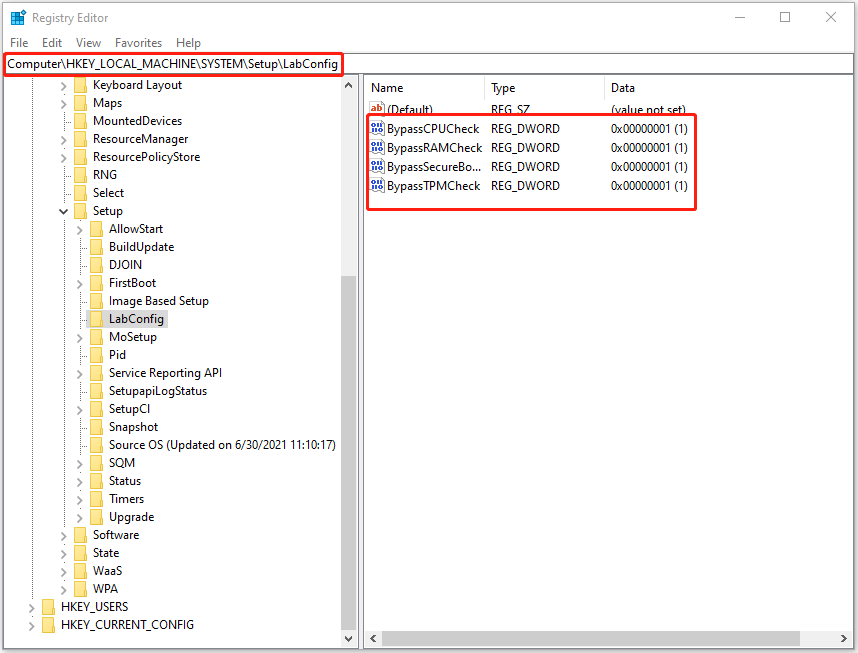
Final Words
Here is how to fix the “This PC can’t run Windows 11 on VirtualBox” issue. Should you have any related issues, you can let us know in the comment.
About The Author
Position: Columnist
Having been an editor at MiniTool since graduating college as an English major, Daisy specializes in writing about data backups, disk cloning, and file syncing as well as general computer knowledge and issues. In her free time, Daisy enjoys running and going with friends to the amusement park.
If you are unable to install Windows 11 in VirtualBox and getting This PC doesn’t meet the minimum system requirements to install this version of Windows error, here is how you can fix the issue with the help of this step-by-step tutorial. You can bypass TPM requirements to install Windows 11 in VirtualBox even if your host computer doesn’t have the Trusted Platform Module.
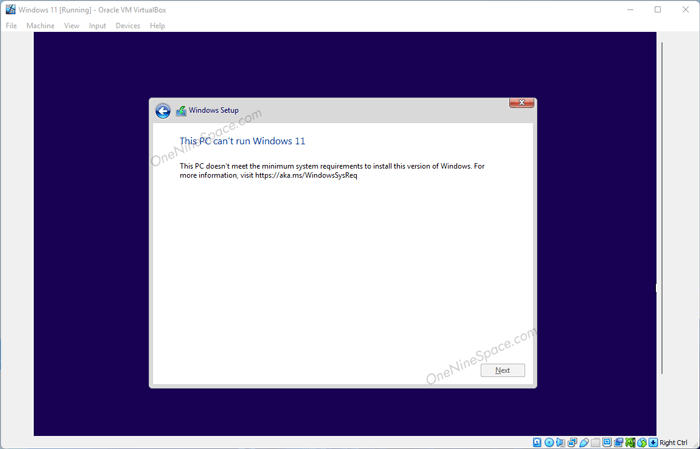
Windows 11 requires Trusted Platform Module or TPM 2.0 and Secure Boot to be installed on your computer. However, let’s assume that you are still using Windows 11 without upgrading your PC to the latest version and want to try Windows 11 in VirtualBox. In the initial days, Microsoft allows people to install Windows 11 in VirtualBox without TPM and Secure Boot. However, things are different now as they have lifted the relaxation. Now, your host computer must have TPM 2.0 and Secure boot to install Windows 11 in Virtual Box.
If you try to install Windows 11 in VirtualBox without TPM and Secure Boot, you will end up getting an error message saying:
This PC can’t run Windows 11
This PC doesn’t meet the minimum system requirements to install this version of Windows. For more information, visit https://aka.ms/WindowsSysReq
However, it is possible to bypass TPM requirement and install Windows 11 without any error in Oracle VirtualBox.
Unable to install Windows 11 in VirtualBox
To fix unable to install Windows 11 in VirtualBox error, follow these steps:
- Restart Windows 11 installation in VirtualBox.
- Press Shift+F10 to open the Command Prompt.
- Type regedit and press the Enter button.
- Navigate to HKEY_LOCAL_MACHINE\SYSTEM\Setup.
- Right-click on Setup > New > Key.
- Name it as LabConfig.
- Right-click on LabConfig > New > DWORD (32-bit) Value.
- Name it as BypassTPMCheck.
- Double-click on it to set the Value data as 1.
- Create another DWORD value named BypassSecureBootCheck.
- Set the Value data as 1.
- Click the OK button.
To learn more about these steps, continue reading.
At first, you need to restart the Windows 11 installation. However, you do not need to go further than the first window displaying the Install and Repair your computer options. Once you get this window, press Shift+F10 to open the Command Prompt. Type regedit and hit the Enter button.
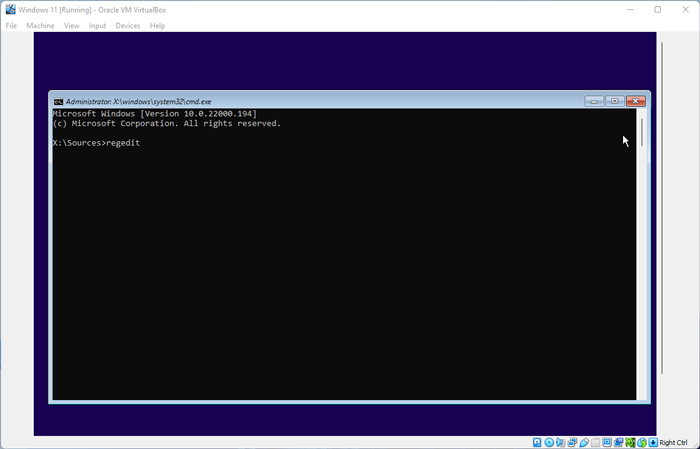
It opens the Registry Editor on your virtual machine. You need to navigate to the following path:
HKEY_LOCAL_MACHINE\SYSTEM\Setup
In the Setup key, you need to create a sub-key. For that, right-click on the Setup key, select New > Key, and name it as LabConfig.
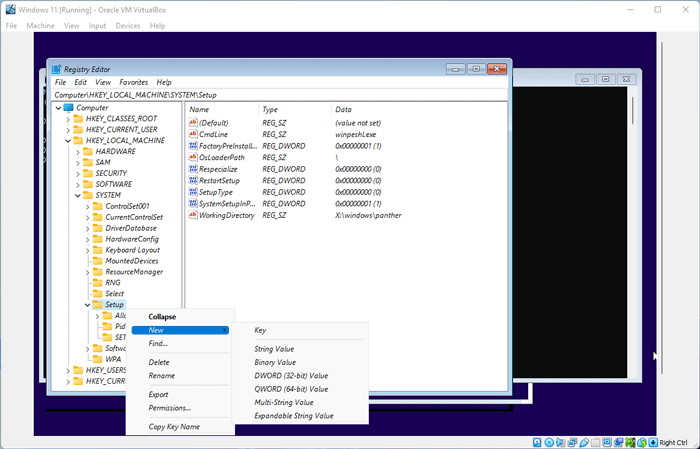
After that, you need to create two DWORD values in the LabConfig key. To do so, right-click on the LabConfig key or the empty space on the right-hand side, select New > DWORD (32-bit) Value.
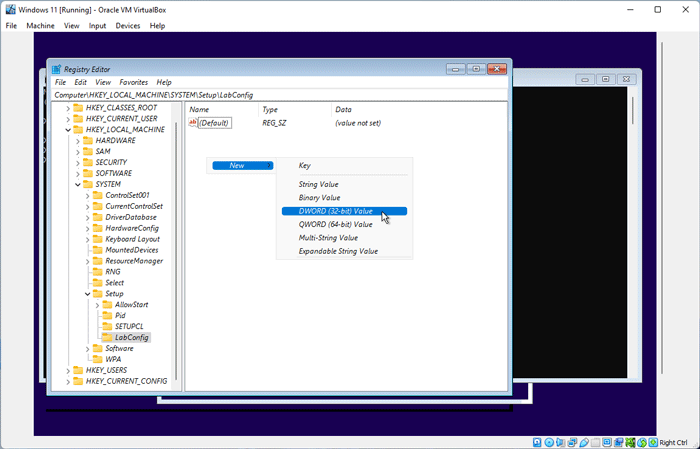
Name it as BypassTPMCheck. Then, double-click on it to set the Value data as 1.
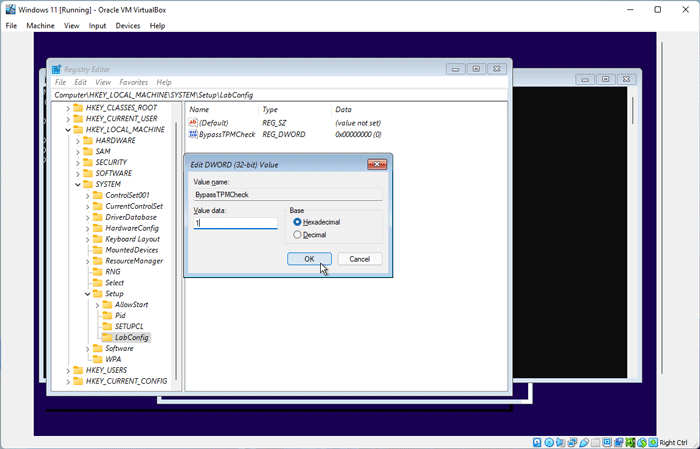
Click the OK button to save the change. Following that, you have to repeat these steps to create another DWORD value in the same key and name it as BypassSecureBootCheck.
Then, double-click on this DWORD value to set the Value data as 1 like before. Once done, close the Registry Editor and Command Prompt window.
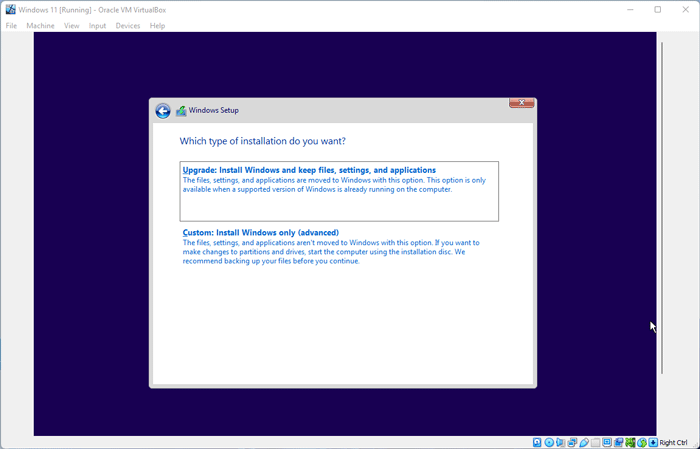
Now, you can install Windows 11 in VirtualBox without any TPM and Secure Boot errors.
How do you fix Cannot install Windows 11 on VirtualBox?
To fix Cannot install Windows 11 on VirtualBox error, you need to create one key and two DWORD values in the Registry Editor. For that, navigate to the HKEY_LOCAL_MACHINE\SYSTEM\Setup, and create a key named LabConfig. Then, create two DWORD values in this key and name them as BypassTPMCheck and BypassSecureBootCheck. At last, you need to set the Value data as 1.
That’s all! Hope this guide will help you bypass the TPM requirement and install Windows 11 in VirtualBox without any problem.
Related:
- How to enable TPM 2.0 in Gigabyte motherboard
- How to enable TPM 2.0 in BIOS MSI Motherboard
Sudip Majhi
The article, you are reading, is written by Sudip, who starts and ends the day with computer. He contributes to some top media publications after gathering 12 years of experience in content writing in technology field. Email him to say hello!

